- Definition of Biology - What is Biology?
- Branches of Biology
- Importance of biology
- Characteristics of Living Organisms
- Collection of Specimen
- Comparison Between Plants and Animals

Definition of Biology - What is Biology?
Biology is a branch of science that deals with the study of living things.
There are diverse forms of life on earth ranging from the invisible microscopic living things to the gigantic life forms. It aims at explaining the living world in terms of scientific principles.
It is important to note, however, that living things interact with the non living things in the environment as well. Biology, therefore also entails the study of non living things as well. The role of human beings in shaping the environment is also investigated in biology.
In summary, biology deals with the study of origins, types, nature, growth, development, interactions and maintenance of all life forms on earth.

Branches of Biology
Biology is such a broad field of knowledge. It is divided into two broad branches.
- Zoology - This is a branch of biology that deals with the study of animal life.
- Botany- This is a branch of biology that deals with the study of plant life.
Within the two branches, there exist even smaller branches because the branches (botany and
zoology) are very wide and complex.The smaller branches of biology include:
- Ecology - This is the study of the interrelationships between organisms and their environment. Ecology aims at establishing how organisms are related to each other and their environment. Ecology is further subdivided into smaller branches. These can be forest ecology, marine ecology, rangeland ecology etc.
- Genetics - This sub-branch of biology deals with the study of inheritance and variation. It deals with the study of how variations (differences) occur between parents and their offspring. It is also concerned with how various characteristics are passed on from parents to offspring.
- Entomology - This is the study of insects.
- Parasitology - This is the study of parasites.
- Physiology - This deals with the study of the functions of various structures of an organism. It deals with the processes that take place in the body of organisms.
- Anatomy - The study of the internal structure of organisms.
- Microbiology - This is the study of microorganisms.
- Bacteriology- The study of bacteria.
- Ornithology - This is the study of birds.
- Itchthology - This is the study of fishes
This list is in-exhaustive as there are very many other branches of biology.

Importance of biology
The study of biology is very important. The knowledge acquired from this study can benefit an individual in myriad ways. The study of biology is important in that:
- The knowledge acquired from the study of biology can be very helpful in solving environmental problems such as food shortage, poor health services, pollution and environmental degradation.
- The study of biology can grant one an entry into various careers such as medicine, veterinary medicine, animal husbandry, horticulture and dentistry.
- The study of biology leads to development of scientific skills which are very useful in life. These include skills of observing, identifying, recording, classifying, measuring, analyzing and evaluating. These skills can enable one learn how to make right choices and lead an improved life.
- Through the study of biology man learns the causes of human, plant and human diseases and how best these diseases can be prevented and cured.
- Biological knowledge acquired in the study of biology is very useful in enhancing international cooperation. Some biology related international conventions include:
- Joint development of HIV/AIDS vaccine by Kenyan and British scientists.
- The coordinated fight against Severe Acute Respiratory Syndrome involving scientist all over the world.
- The fight to save the ozone layer from depletion through various international agreements such as the Kyoto protocol.
- Management of resources through international treaties such as the CITES (Convention against International Trade on Endangered Species).

Characteristics of Living Organisms
Living things share a lot of characteristics in common. These characteristics are discussed below.
-
Nutrition
Nutrition is the process by which living things obtain and assimilate (utilize) nutrients. Living things require nutrients for various purposes; growth, repair of worn out tissues and for provision of energy. Plants manufacture their own food using light energy, carbon (IV) oxide, water and mineral salts through the process of photosynthesis. Conversely, animals feed on already manufactured foods from plants and other animals. -
Respiration
Respiration is the process by which food substances are chemically broken down to release energy. During respiration, oxygen is used while energy, carbon (IV) oxide and water are released. Respiration occurs in all living cells. The energy produced in living things is very useful as it enables the living things carry out some of their physiological processes. The energy
is also required for growth and development, movement and repair of worn out tissues. -
Gaseous Exchange
Gaseous exchange refers to the process by which living things exchange oxygen and carbon (IV) oxide across the respiratory surfaces. Animals always take in air rich in oxygen and give
out air rich in carbon (IV) oxide. Carbon (IV) oxide is a waste product of chemical reactions in the body. Animals require oxygen for respiration. Gaseous exchange, therefore, enables animals obtain oxygen for respiration and get rid of carbon (IV) oxide, a waste product. Plants, however, require carbon (IV) oxide for photosynthesis during the day. They give away
oxygen as a by-product. The plants equally require oxygen for respiration and give away carbon (IV) oxide. -
Excretion
This is the process by which living things separate and eliminate the waste or harmful materials resulting from chemical reactions within the cells. These harmful waste products of
metabolism maybe toxic to the body if they are left to accumulate in the cells of the living things. -
Growth and Development
Growth refers to an irreversible increase in size and mass while development refers to the irreversible change in complexity of the structure of living things. Growth and development of living things is essential as it enables the living things to attain maximum size that can enable them to perform their functions and roles. -
Reproduction
This is the process by which living things give rise to new individuals of the same kind. All living things reproduce. Reproduction is essential as it leads to perpetuation of species and it avoids extinction of certain animals and plants. -
Irritability
This is the ability of living things to perceive (detect) changes in their environment and respond to them appropriately. Living things respond to changes in temperature, humidity, light, presence or absence of certain chemicals. Response of organisms to these changes is crucial as it enables them to escape from harmful stimuli. Ability to detect changes in the environment also enables organisms to obtain resources in their environment. -
Movement
Movement refers to change is position (displacement) of a part or parts of an organism. Movement in plants includes folding of leaves, closing of flowers and growing of shoots towards
light. The change of position of an entire organism from one position to another is locomotion.
Study questions
- Motor vehicles move, use energy and produce carbon dioxide and water. Similar characteristics occur in living organisms yet motor vehicles are not classified as living. List the other characteristics of living things that do NOT occur in motor vehicles.
- Give the name to the study of:
- The cell
- Micro—organisms
- The study of differences between parents and their offspring
- The study of relationships between organisms and their environment

Collection of Specimen
We have defined biology as the study of living things. For effective study, a biologist may have to collect some living things or some parts of living things for observation and analysis. The living things or parts of living things that are used for biological study are called specimens. Biological studies always take place in laboratories. A laboratory is a building or a room that is designed and equipped for scientific studies. Collections of living things especially animals may not be very easy. Some of the animals are not easy to catch while some are quite dangerous. Knowledge on proper specimen collection and handling of is very important. We will discuss some of the apparatus used in specimen collection.
-
Sweep net
This is used for catching flying insects.
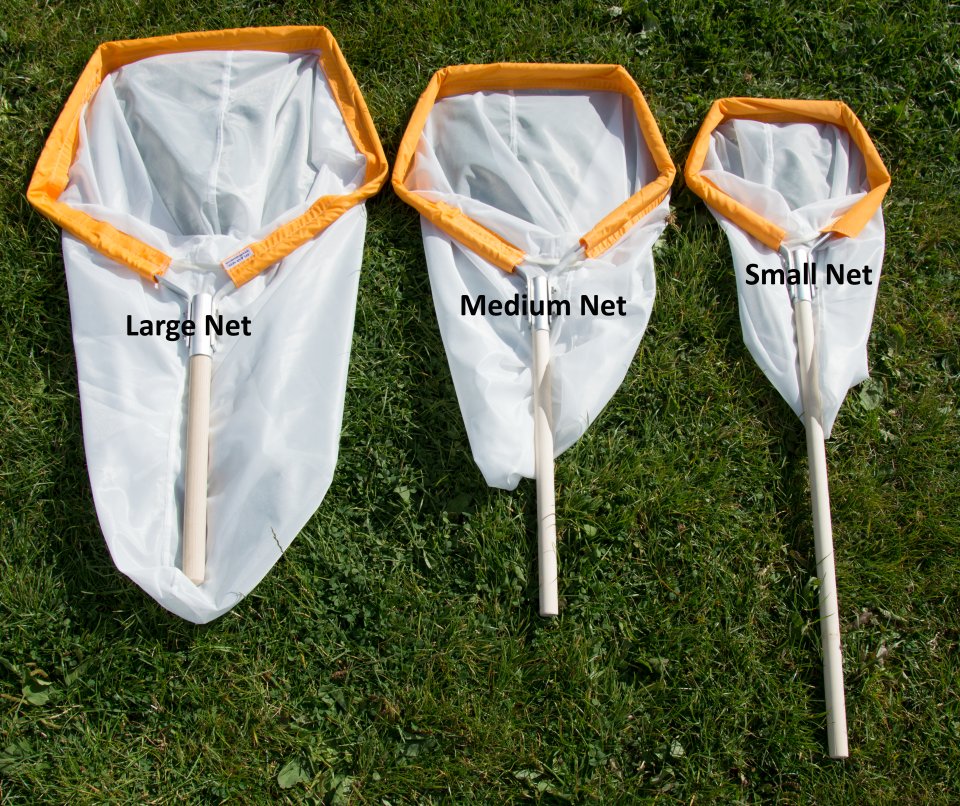
-
Fish net
This is used for trapping small fish and other small water animals.
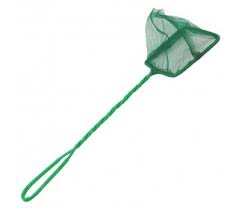
-
Pooter
This is used for sucking small animals from rock surfaces or barks of trees.
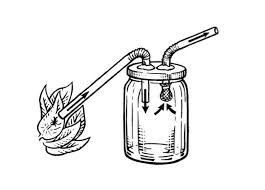
-
Bait trap
This is used for attracting and trapping small animals including rats.
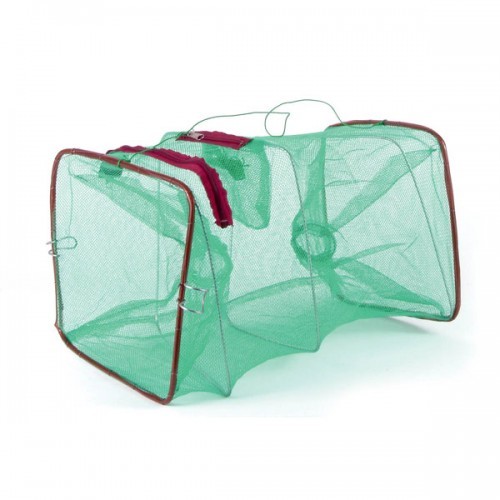
-
Pit fall trap
This is used for catching crawling animals.
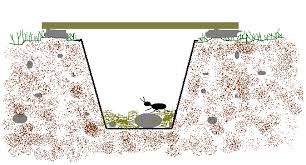
-
Pair of forceps
This is an apparatus used for picking up small crawling animals e.g. stinging insects.
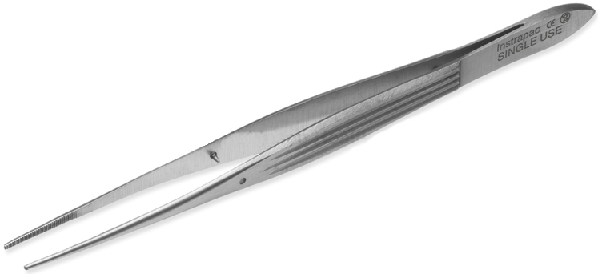
-
Specimen bottles
These are bottles used for keeping collected specimen. They are of different sizes depending on the size of the specimen being studied.
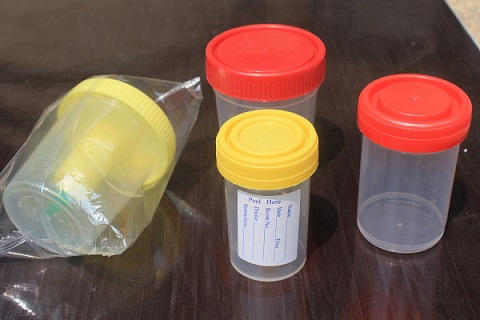
-
Magnifying lens
This is used to enlarge small objects. A hand lens is a common magnifying lens used in the laboratory. The magnifying power of the hand lenses is always indicated on the lens e.g. X10, X5, X8. The magnifying power of a lens shows how many times the image will be enlarged compared to the object.
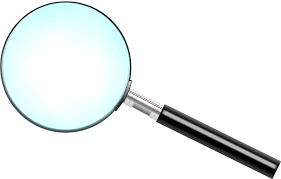
How to use a magnifying lens
-To use a magnifying lens, place the object to be enlarged on the bench. Hold the magnifying lens on one hand and while closing one eye, move the lens towards the object until the image comes into clear focus.
-If a magnifying lens is used to make a drawing of a specimen, the magnification of the drawing will have no relation with the size of the drawing.
The magnification of the drawing can be calculated using the formula shown below.
Drawing magnification= length of drawing/length of actual object
The multiplication sign must come before the magnification value e.g. X10, X5, X15 etc.
Precautions During Collection and Observation of Specimen
While collecting specimen for observation, a biologist should play close attention to the following:
- Collect only the number of specimen you need; do not collect more than you need.
- Do not harm the specimen during the capture/collection exercise.
- Do not destroy the natural habitat of the specimens.
- Handle dangerous/injurious specimens with care. Such injurious specimens can be stinging plants or insects. Forceps and hand gloves should be used in such cases.

Comparison Between Plants and Animals
| Plants | Animals |
|
Most possess chlorophyll which gives them their green colour. Chlorophyll is very useful in the process of photosynthesis. |
They lack chlorophyll pigment hence feed on already manufactured food materials. |
| Their cells have cellulose cell walls | Their cells lack cellulose cell walls |
| They respond slowly to changes in their environment. | They respond quickly to changes in the environment. |
| Plants are immobile |
Most animals move about in search of food, shelter and mates. |
| They lack specialized excretory organs | Have complex excretory organs |
Download Introduction to Biology - Form 1 Biology Notes.
Tap Here to Download for 50/-
Get on WhatsApp for 50/-
Why download?
- ✔ To read offline at any time.
- ✔ To Print at your convenience
- ✔ Share Easily with Friends / Students